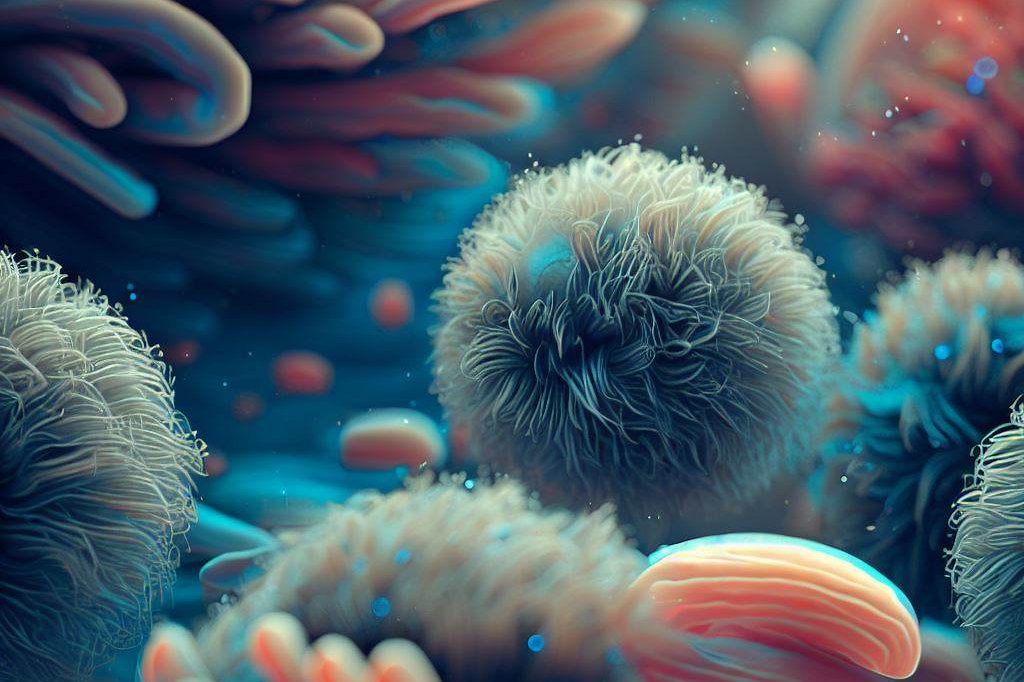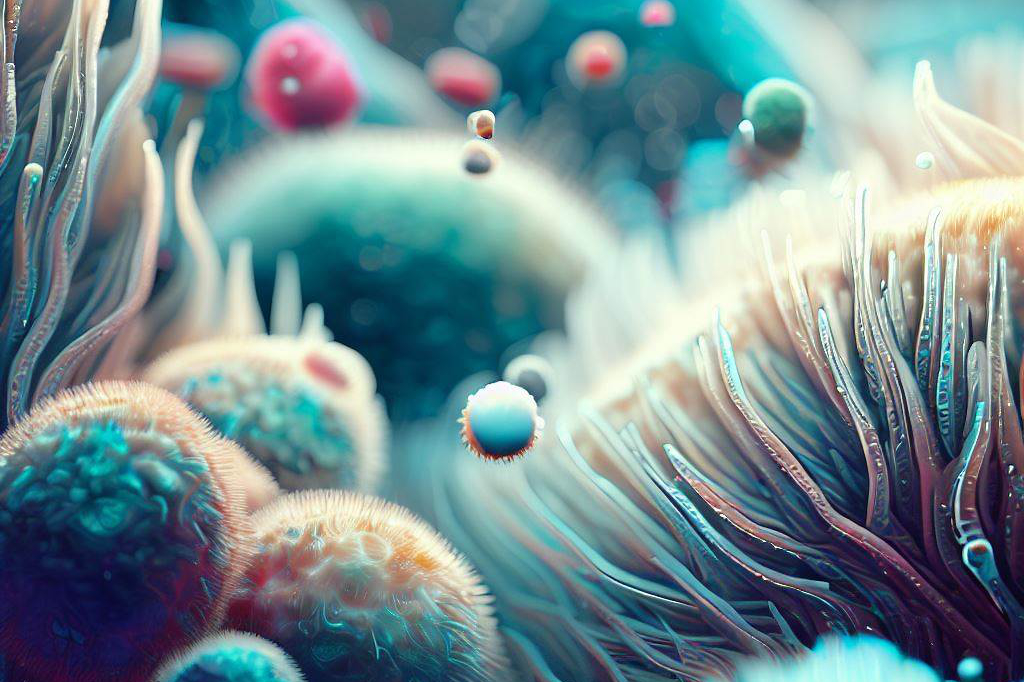Surviving the Extremes: Unraveling Earth’s Extremophiles and the Quest for Alien Life
Extremophiles, those remarkable organisms that thrive in extreme environments, have captivated the minds of scientists and explorers alike. By pushing the boundaries of what we consider habitable conditions, these tenacious life forms offer tantalizing glimpses into the possibility of life existing beyond our own planet. The study of extremophiles on Earth plays a crucial role in furthering our understanding of astrobiology and aids us in the search for extraterrestrial life.
A brief explanation of extremophiles
Extremophiles are microorganisms that have evolved to survive and even thrive in environments once deemed inhospitable to life. These resilient organisms possess extraordinary adaptations that enable them to tolerate extreme temperatures, pH levels, salt concentrations, and pressures.
They can be found across a wide range of habitats on Earth, such as hydrothermal vents deep beneath the ocean surface, acidic hot springs, frozen Arctic tundra, and even within highly toxic waste sites. One fascinating group of extremophiles is thermophiles—microbes that flourish in scorching temperatures exceeding 120 degrees Celsius (248 degrees Fahrenheit).
Another intriguing group is psychrophiles—organisms capable of surviving at temperatures well below freezing. These extremophiles are just two examples among many remarkable species that have defied conventional notions about where life can exist.
The fascination with the search for life on other planets

The quest for extraterrestrial life has long been a captivating subject for scientists and laypeople alike. It taps into our innate curiosity about whether we are alone in the vast expanse of space or if there are other civilizations thriving beyond our planet.
The discovery of even microbial life elsewhere would revolutionize our understanding of biology and provide profound insights into the potential diversity inherent in the universe. Moreover, finding evidence of extraterrestrial life could shed light on humanity’s place in the cosmos.
It would force us to reevaluate our perspectives and challenge preconceived notions about the uniqueness of Earth. The search for life on other planets is an endeavor that combines scientific rigor, technological innovation, and philosophical contemplation—a thrilling pursuit that sparks the imagination and drives our collective fascination with the unknown.
As we delve deeper into understanding extremophiles on our own planet, we unlock vital clues that inform how and where we should search for life beyond Earth. By examining these organisms’ adaptations to extreme conditions, scientists can identify potential habitable environments on other planets or moons in our solar system or even exoplanets orbiting distant stars.
The study of extremophiles offers a tantalizing glimpse into what might lie beyond our atmosphere—perhaps a tapestry of diverse and resilient organisms thriving in places previously thought uninhabitable.
Extremophiles: Nature’s Extreme Survivors

Definition and Classification of Extremophiles
Extremophiles encompass a diverse group of microorganisms that possess remarkable adaptations enabling them to survive in extreme environments that were once thought to be uninhabitable. These resilient organisms challenge our preconceived notions about the conditions necessary for life to persist. The classification system for extremophiles is based on their ability to thrive in specific extreme conditions such as
- high temperatures (thermophiles),
- extreme cold (psychrophiles),
- highly acidic environments (acidophiles),
- alkaline conditions (alkaliphiles),
- or high salt concentrations (halophiles).
Thermophiles: Thriving in High Temperatures
Thermophiles are a fascinating group of extremophiles that thrive in scorching temperatures that exceed what is considered suitable for most life forms. They are typically found inhabiting geothermal areas such as hot springs, hydrothermal vents, or even deep-sea volcanic regions.
These organisms have evolved heat-resistant proteins and enzymes that remain functional under intense thermal stress. Furthermore, their cellular membranes display unique structural adaptations, incorporating heat-stable lipids that provide stability at high temperatures.
The study of thermophilic microorganisms not only provides insights into their astounding ability to survive in extreme heat but also offers clues regarding the potential habitability of other planets with similar conditions. The discovery and analysis of thermophiles on Earth suggest that extraterrestrial environments, like hydrothermal vents on icy moons such as Enceladus or Europa, might host life forms that have adapted to thrive in these extreme conditions.
Psychrophiles: Surviving in Extreme Cold
Psychrophiles, or cold-loving extremophiles, demonstrate an astonishing ability to endure subzero temperatures found in polar ice caps, permafrost regions, and deep-sea trenches. These resilient microorganisms have adapted unique strategies to maintain their cellular integrity and metabolic activity under freezing conditions. They produce antifreeze proteins that prevent the formation of ice crystals within their cells and modify their cell membranes to remain flexible even at extremely low temperatures.
The investigation of psychrophilic organisms has implications beyond Earth’s frozen landscapes; it also contributes valuable knowledge for the search for life on other frigid celestial bodies. For instance, the exploration of icy moons like Saturn’s moon Titan or Jupiter’s moon Ganymede raises intriguing possibilities about the existence of psychrophilic microbes capable of surviving within subsurface liquid water oceans beneath their frozen surfaces.
Acidophiles: Flourishing in Highly Acidic Environments
Acidophiles are a group of extremophiles that defy conventional notions about habitable environments by thriving in highly acidic conditions such as acid mine drainage sites, volcanic lakes, and acidified soils. These organisms have developed various strategies to combat extreme acidity by producing enzymes with exceptional stability at low pH levels and employing efficient mechanisms for maintaining pH homeostasis within their cells.
The study of acidophilic microorganisms not only enriches our understanding of extremophile adaptations but also has implications for astrobiology. Acidic environments, such as the sulfuric acid-rich clouds of Venus or the subsurface acidic lakes on Mars, have sparked scientific interest in exploring the possibility of microbial life surviving and thriving within these seemingly hostile conditions.
Alkaliphiles: Adapting to Alkaline Conditions
Alkaliphiles are extremophiles that flourish in highly alkaline environments, defying the traditional notion of pH constraints for life. These organisms can be found in extreme habitats like soda lakes, hydrothermal vents, and carbonate-rich soils.
Alkaliphiles have evolved unique mechanisms to cope with high pH levels by producing alkaline-tolerant enzymes and adopting efficient ion transport systems to maintain cellular homeostasis. The investigation of alkaliphilic microorganisms not only provides insights into their remarkable adaptability but also offers valuable guidance for future missions exploring celestial bodies with high pH environments.
For example, Saturn’s moon Enceladus possesses plumes erupting from its subsurface ocean that exhibit alkalinity. The presence of alkaliphiles on Earth suggests that similar conditions might be conducive to life beyond our planet.
Halophiles: Thriving in High Salt Concentrations
Halophiles are extremophiles with an exceptional ability to thrive in environments characterized by high salt concentrations, such as salt flats, saline lakes, or highly saline soils. These organisms possess unique adaptations to counteract the osmotic stress caused by the excessive salt content in their surroundings.
They produce compatible solutes that help regulate the water balance within their cells and prevent dehydration. The study of halophilic microorganisms offers valuable insights into how life can persist under extreme salinity conditions.
This knowledge has implications for astrobiology when considering extraterrestrial bodies like Mars, where evidence suggests the existence of briny liquid water beneath its surface. The exploration of halophiles on Earth, with their ability to survive in high salt concentrations, hints at the potential for similar adaptations to exist in hypothetical Martian microbial ecosystems.
Studying Earth’s Extremophiles

Exploration of Extreme Environments on Earth
Earth is a remarkable planet, teeming with life in diverse and astonishing habitats. Scientists have embarked on a fascinating journey to examine the extreme environments found here, where life exists against all odds.
From scorching hot thermal vents deep beneath the ocean’s surface to icy subglacial lakes in Antarctica, these harsh settings shelter extremophiles, organisms that thrive under extreme conditions. Studying Earth’s extremophiles provides invaluable insights into the potential for life beyond our planet.
Deep-Sea Hydrothermal Vents: Submerged Worlds of Wonder
Hidden deep in the mysterious depths of our oceans lie hydrothermal vents, underwater geysers that release superheated water enriched with minerals and gases. These unique ecosystems are characterized by immense pressure, extreme temperatures reaching up to 750 degrees Fahrenheit (400 degrees Celsius), and complete darkness.
Despite these hostile conditions, researchers have made extraordinary discoveries here. Exploration of deep-sea hydrothermal vents has uncovered a rich diversity of thermophilic bacteria and archaea – microorganisms specially adapted to thrive in high-temperature environments.
These extremophiles possess remarkable heat-resistant enzymes that allow them to survive in the scalding waters surrounding the vents. The implications of finding life on other planets with similar conditions are profound.
Some moons in our solar system, such as Jupiter’s moon Europa and Saturn’s moon Enceladus, contain subsurface oceans believed to be heated by hydrothermal activity. By studying thermophilic extremophiles on Earth, scientists gain crucial knowledge about how life may adapt and persist in such extraterrestrial environments.
A Window into Frozen Worlds: Antarctic Subglacial Lakes
Antarctica is renowned for its icy landscapes and frigid temperatures; however, hidden beneath the continent’s thick ice sheets lie a network of subglacial lakes. These lakes, isolated from the outside world for millions of years, harbor conditions that mimic those found on icy moons in our solar system.
The extreme cold conditions prevailing in these subglacial lakes pose a formidable challenge for life. Nevertheless, scientists have probed these icy realms and made astonishing discoveries.
They have identified psychrophilic microorganisms, which are adapted to thrive in freezing temperatures. These resilient extremophiles possess unique mechanisms to withstand the harsh Antarctic environment and survive in such hostile surroundings.
The knowledge gained from studying psychrophilic microorganisms in Antarctic subglacial lakes provides valuable insights into the potential existence of life on icy moons like Jupiter’s Europa and Saturn’s Enceladus. The presence of liquid water beneath their frozen surfaces has sparked immense excitement within the scientific community, as it suggests the possibility of habitable environments similar to Earth’s subglacial lakes.
Exploring Earth’s extremophiles opens windows into unimaginably challenging environments where life finds a way to persist against all odds. The study of deep-sea hydrothermal vents reveals the adaptability of thermophilic extremophiles and their potential implications for extraterrestrial life.
Similarly, investigating Antarctic subglacial lakes sheds light on how psychrophilic microorganisms survive extreme cold and offers insights into possible habitats on icy moons. As we continue our quest to understand where life could exist beyond Earth, studying extremophiles becomes an indispensable tool in the search for signs of life elsewhere in our vast universe.
Extremophile Adaptations and Astrobiology

Unlocking the Secrets of Extremophile Adaptations
Extremophiles have evolved remarkable strategies to survive in extreme environments, offering valuable insights into how life can persist under harsh conditions. By studying their adaptations, scientists gain a deeper understanding of the limits and possibilities for life beyond Earth. One fascinating aspect is extremophiles’ ability to withstand the high temperatures encountered near hydrothermal vents.
Thermophilic microorganisms possess special enzymes that remain stable at elevated temperatures, allowing them to perform crucial metabolic processes. These heat-resistant enzymes hold great potential for industrial applications, such as in the production of biofuels or bioremediation processes.
Similarly, psychrophiles have adapted mechanisms to thrive in the freezing temperatures found in Antarctic subglacial lakes. They produce antifreeze proteins that prevent ice crystal formation within their cells, maintaining their vital cellular functions even in extremely cold environments.
These proteins have potential applications in food preservation and cryopreservation techniques used in medicine. Studying these adaptations not only expands our knowledge of the diversity of life on Earth but also provides crucial information for astrobiologists seeking signs of life elsewhere.
Implications for Astrobiology
The study of extremophiles on Earth has profound implications for astrobiology – the search for life beyond our planet. As we explore the cosmos and identify potentially habitable environments, understanding how organisms adapt to extreme conditions allows us to refine our search criteria and target specific planets or moons where similar extremophile adaptations may be present.
For instance, studying thermophiles thriving near hydrothermal vents provides insights into potential habitable zones on other planets or moons with geothermal activity. The discovery of similar ecosystems could suggest the presence of life forms capable of enduring high temperatures there as well.
Likewise, investigations into psychrophilic organisms surviving in Antarctic subglacial lakes contribute to our understanding of the potential habitability of icy moons like Jupiter’s Europa or Saturn’s Enceladus, which are believed to harbor subsurface oceans. The adaptations of psychrophiles shed light on the possibilities for life in these frozen environments, inspiring future exploration missions and sample return endeavors.
Final Thoughts

The study of extremophiles on Earth not only showcases the resilience and adaptability of life but also offers a window into the potential for extraterrestrial life. Extremophiles have demonstrated that they can survive and even thrive in conditions once considered inhospitable, expanding our definition of habitability.
By unraveling their intricate adaptations, scientists gain crucial knowledge that guides our search for life beyond Earth. As we continue to explore distant worlds, each discovery brings us closer to answering one of humanity’s most profound questions: Are we alone in the universe?
The study of extremophiles gives us hope and fuels our curiosity, reminding us that even in the harshest environments, life finds a way. With every new insight gained from studying these remarkable organisms, we inch closer to unlocking the secrets of our cosmic neighbors and finding companionship among the stars.

C M, a seasoned editor, journalist, and consultant, is deeply fascinated by the convergence of technology, space, and the future of humanity.
With a particular interest in transhumanity, futurology, and the philosophical and ethical dimensions of these domains, C M serves as the lead contributor to SpaceSpotlight and TranscendSphere.
When not penning insightful articles on these rapidly evolving fields, C M indulges in their love for podcasts and books, proudly embracing their status as a ‘Happy Nerd Extraordinaire!’



